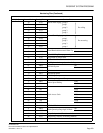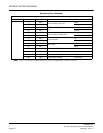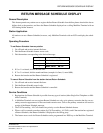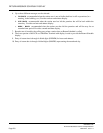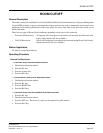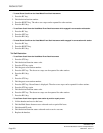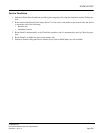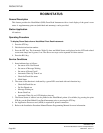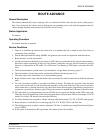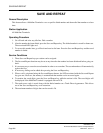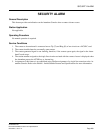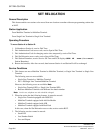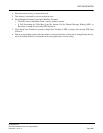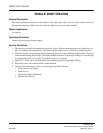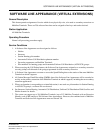
ROUTE ADVANCE
NEAX2000 IVS
2
Business/Hotel/Data Features and Specifications
NDA-24271, Issue 1.0
Page 281
ROUTE ADVANCE
General Description
This feature automatically routes outgoing calls over alternate facilities when the first choice trunk group is
busy. Users select the first choice route by dialing the corresponding access code, and the equipment then ad-
vances through alternate trunk groups only if the first choice is busy.
Station Application
All stations.
Operating Procedure
No manual operation is required.
Service Conditions
1. There is no indication provided to the station user as to whether the call is routed over the first choice or
subsequent choice facilities.
2. Station Message Detail Recording (SMDR) will generate call records in conjunction with this feature.
3. Route Advance is trunk-route based.
4. Careful consideration should be given to the use of FX trunks as an alternate facility since in many instances,
these lines require outpulsing of digits for long distance (which the user may not dial because he will not
know he is connected to an FX trunk). Use of the Least Cost Routing (LCR) feature overcomes this diffi-
culty.
5. The maximum number of trunk routes to be included in a single Route Advance group is 7.
6. The total number of routes that can be contained in all Route Advance groups is 64.
7. The same route can be included in two or more different groups.
8. Route Advance occurs only when the dialed code accesses the first choice trunk route in the Route Advance
table.
9. No code conversion capability is provided with Route Advance. The digits the user dials (after the trunk
access code) will be sent over the selected trunk regardless of the trunk route used. The user will not know
which trunk route is selected; therefore, only those trunk routes that accept the same dialing format may be
assigned to a given Route Advance group. If digit conversation is needed, the LCR feature should be used.
10. FX trunk routes to a foreign number plan area (FNPA) do not require the dialing of that FNPA area code.
Therefore, these FX trunks may not be used in the same Route Advance table with local exchange or WATS
trunks. Use of the LCR feature overcomes this difficulty.
11. Tie Lines should not be assigned to a Route Advance table that includes C.O., FX, or WATS trunk groups.
12. Route Advance is available for use with outgoing C.O., FX, WATS, CCSA, and Tie Lines.
13. The dialing party may be either a station, Attendant, Tie Line, or outside party using Direct Inward System
Access (DISA).
14. If the system is designated as KF registration, this feature will not be available.



